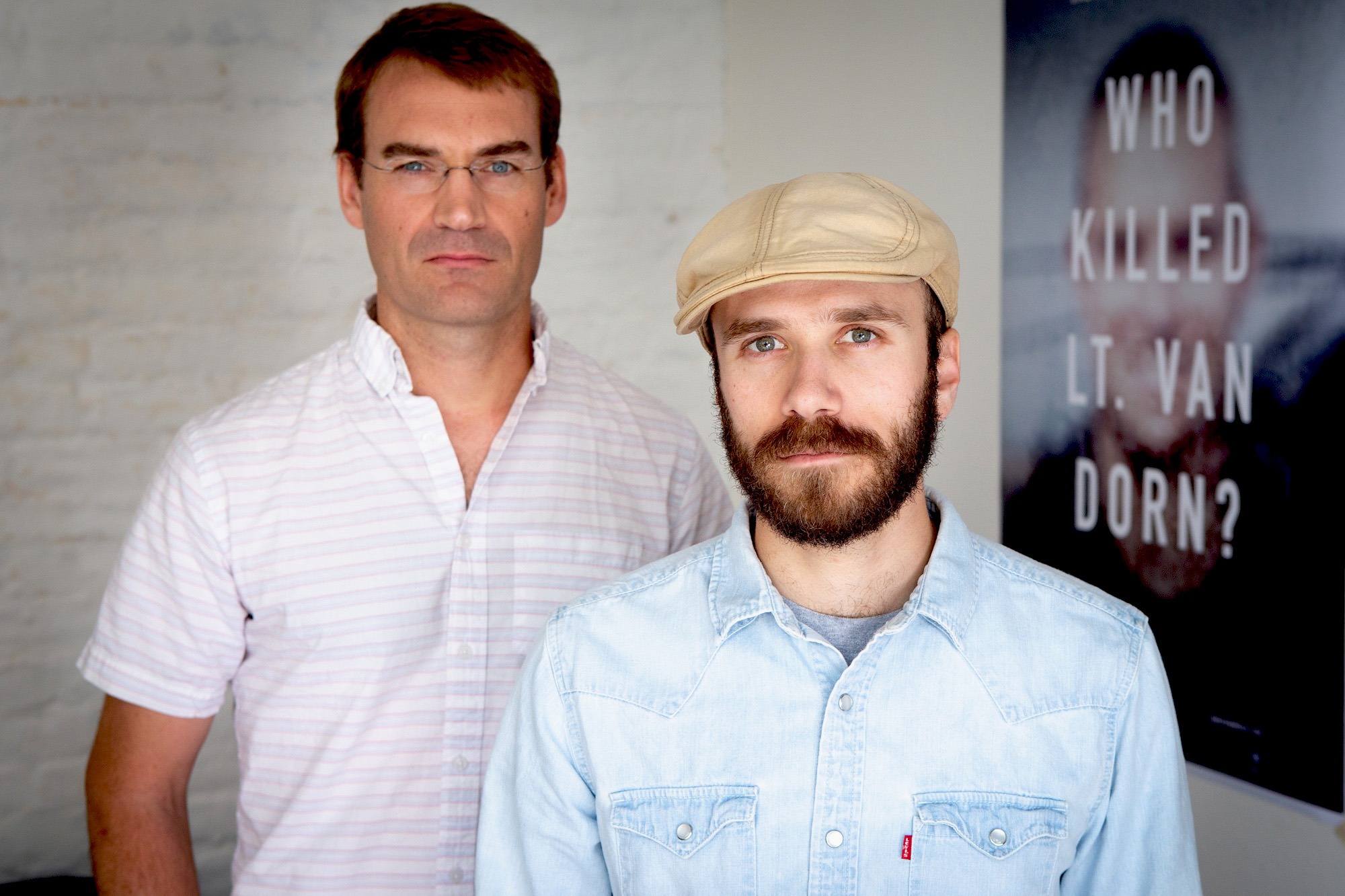
Director/Producer Zachary Stauffer (’08) and Jason Paladino (’15), the film’s assistant producer and primary reporter. Photo: Lisa Hornak/UC Berkeley Graduate School of Journalism.
Nearly five years after a Berkeley Journalism graduate student began reporting on a deadly Navy helicopter crash, his work has led to the first feature documentary film from UC Berkeley’s Investigative Reporting Program. “Who Killed Lt. Van Dorn?” follows the death of a pilot concerned about the safety of his aircraft to reveal larger failings of the American defense establishment.
In 2014, over winter break of his first year at the UC Berkeley Graduate School of Journalism, Jason Paladino (’15) learned that a friend from his hometown of Truckee, Calif., had been killed in a Navy helicopter crash off the coast of Virginia Beach during a training exercise.
His sadness, then curiosity, launched a nearly five-year investigation into the faulty 53E helicopter and why it’s still in use despite the deaths of 132 Americans in less than four decades. His work culminates in the feature-length documentary, “Who Killed Lt. Van Dorn?” which debuts next month at the 41st Mill Valley Film Festival.
After returning from winter break, Paladino approached Lowell Bergman, founder of the School’s Investigative Reporting Program (IRP), to ask for advice and for financial support to aid his reporting. He later became a fellow at the IRP, and teamed up with Mike Hixenbaugh, then a military reporter at The Virginian-Pilot newspaper, to write a handful of print pieces on the helicopter and the military’s lack of response to its disturbing safety record. NBC Nightly News also broadcast a version of the story in 2015.
So why invest more time in the story and pursue a documentary? A film offered space to report it thoroughly and give it a natural story arc. “There were some fundamental questions about why things didn’t go as they should, which we didn’t get to until we expanded to a bigger project,” says Paladino.
“Who Killed Lt. Van Dorn” is directed by Zachary Stauffer, a staff producer at the IRP and a 2008 graduate of the documentary program. Stauffer has years of experience shooting documentaries, including many for PBS “Frontline.” Paladino was the film’s associate producer and, together with Hixenbaugh and Stauffer, one of its reporters.
The film centers around the life, efforts and death of Lt. Wes Van Dorn, the pilot flying the helicopter in which Paladino’s friend, Brian Collins, died. Through interviews with Van Dorn’s colleagues and family and an extensive review of Navy documents and other public records, the reporters learned that Van Dorn had been alerting higher-ups in the Navy about cultural problems in his squadron and questionable maintenance practices on the MH-53E Sea Dragon, the Navy’s version of the helicopter. The film goes on to explore how the Congress and Pentagon’s decision-making process and priorities contributed to the 53E’s dismal safety record.
In total, 18 J-School students and graduates worked on the film, assisting with everything from graphic illustrations to background research to lending an extra hand on camera. “The IRP and the J-School were essential to this project,” says Stauffer. “They backed us and said, ‘We will see this through.’ We’re fortunate to be allowed to explore things that are not always front and center in the documentary world.”
Paladino knows that a film about the military isn’t expected out of Berkeley. “We had sources say, ‘You’re from where?’” he says. But Stauffer, who’s been working on the film for three years, says, “We clearly established ourselves as the people who cared about this and are going to stay and hear you out.”
The military declined to participate in the documentary. Both the Navy and the Marines still fly the 53E. The Marines have introduced a newer model, the CH-53K King Stallion, but the Navy has no plans to buy the helicopter.
Although the evidence the film presents is troubling, Paladino and Stauffer don’t expect radical change in the military as a result of its disclosures. “The defense establishment is a tough thing to turn around,” says Stauffer. Even so, they hope that the film provides a way for those affected by the 2014 crash and others in the military “to have their voices heard, to be listened to, to say their piece,” Stauffer says.
The film premieres at the Mill Valley Film Festival on Oct. 7 and Oct. 9.
By Mara Kardas-Nelson (‘20)
